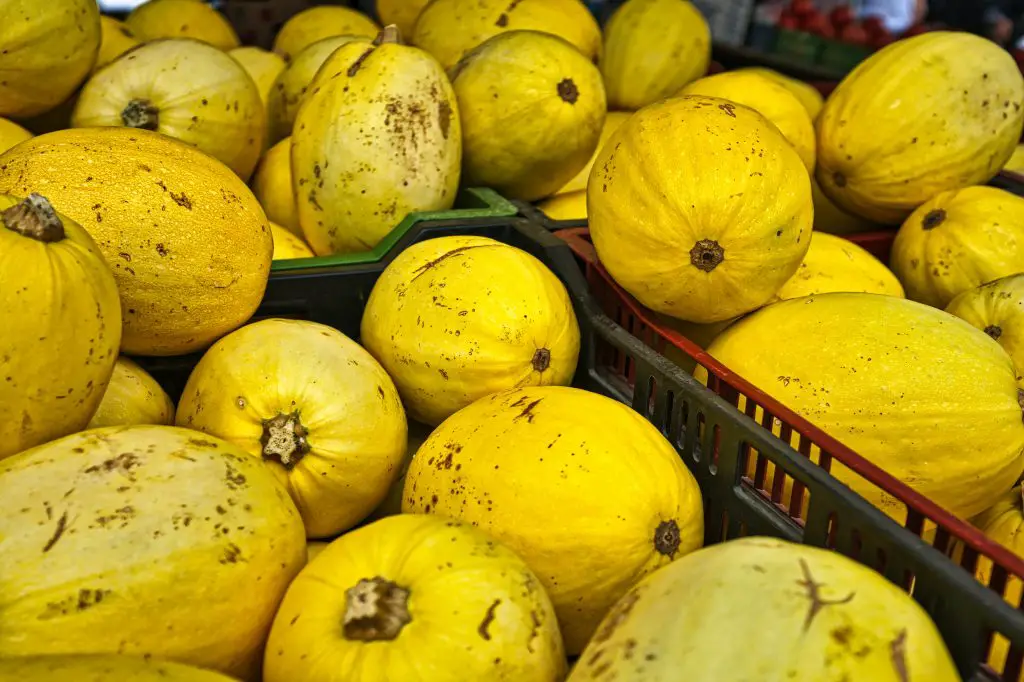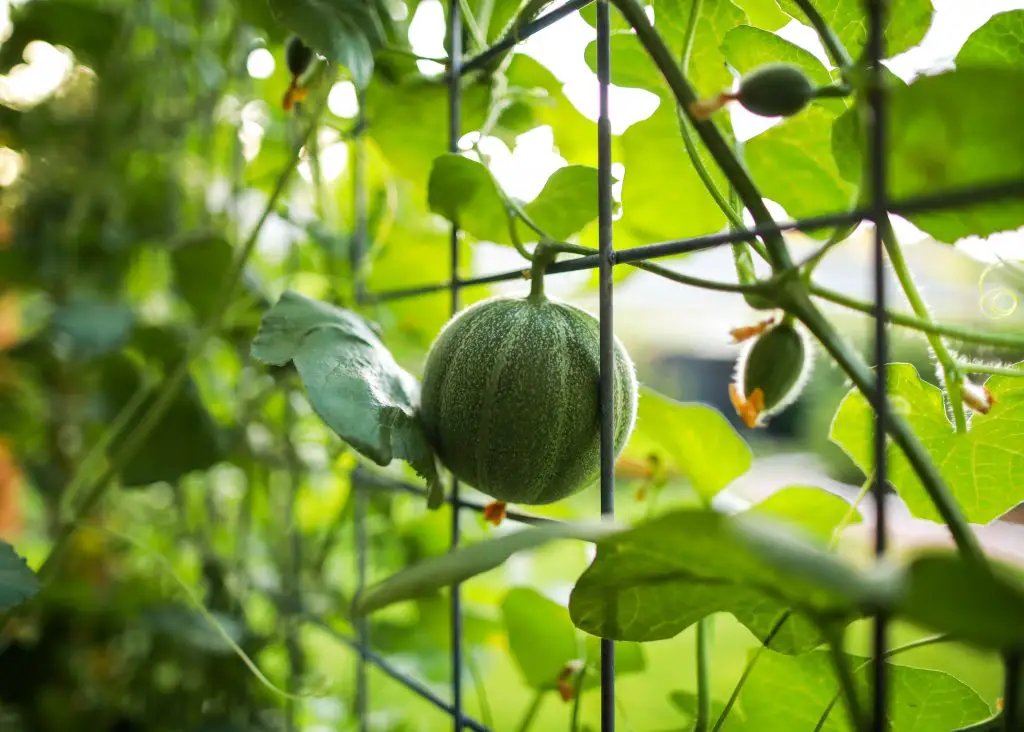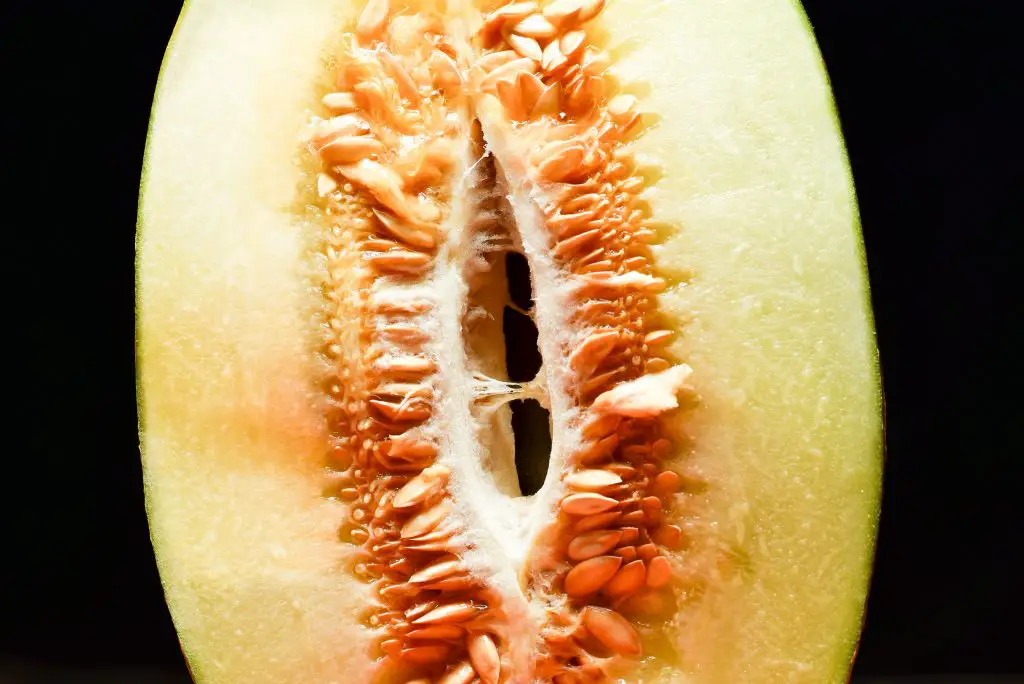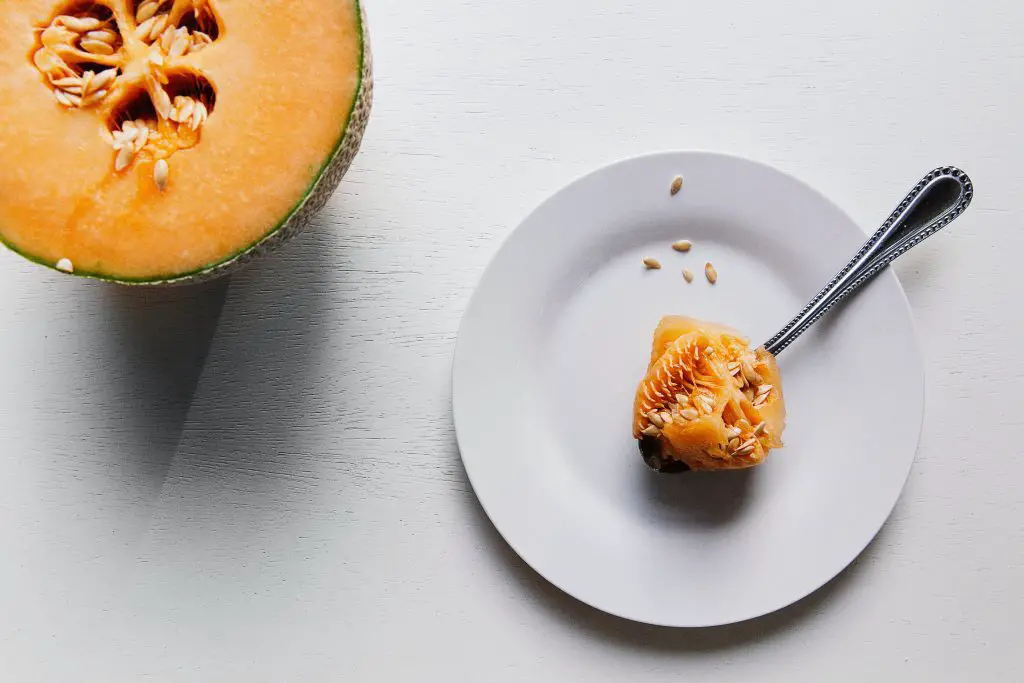Is Rockmelon And Cantaloupe The Same Thing? Yes, in America and Australia the term Rockmelon and Cantaloupe are used interchangeably to describe the Melon. However, interestingly what is labelled as Cantaloupe or Rockmelon in many supermarkets, is actually a Muskmelon. The defining feature of a Muskmelon is that it has a net-like pattern that has a moderate degree of ribbing.
A true Cantaloupe has a smooth skin which is much harder than the Muskmelon, which is grown commercially in the United States. Cantaloupe, compared to the Muskmelon, has a more subtle flavor and is generally more difficult to grow, which is why it is not commercially grown in the United States.
The Cantaloupe itself is thought to have originated in the Western part of Africa before arriving in Europe, where many varieties were developed. The other major types of Melon are Casaba and Asian Melons.
Casaba Melons are a group of Melons that are generally larger than Muskmelons or Cantaloupes. They have a smooth skin and include the Honey Dew. They are sometimes referred to as “Netted Melons” due to there being a requirement to support the fruit with a net to avoid tearing of the stem, when grow vertically.

Asian Melons are the largest type of Melon, they are generally elongated with deep furrows in the surface giving them a distinct appearance. The level of sweetness among this group of Melons varies widely with some being treated as a vegetable, rather than a fruit. An example of this is the Armenian Cucumber.
How To Grow Rockmelon, Cantaloupe And Muskmelon
Melons are a member of the Cucurbit family which includes Pumpkin, Zucchini, Corn and Watermelon. The size of the Melons varies between 1 to 4 kg (2 to 8lb), with plants typically producing 3 to 7 fruit per plant.
Melons are a frost tender plant that require warm conditions to thrive. In regions such as the UK, it is a struggle to get a reasonable crop unless it is grown in the Greenhouse.
Plants can be established by direct sowing into soil or into modular trays. However, due to the heat required it is best to grow them undercover. Melons require at least 15°C (59F) to germinate. It is best to sow them at a depth to 1 to 2 cm (0.5 inches) with 2 seeds per cell. The weakest seedling should be pricked out after a couple of weeks.
If you need to purchase seeds the lowest cost Seed provider I have been able to find in the US is Seeds Now. They specialise in heirloom seed varieties and stock a wide range of Melon seeds. The advantage of purchasing heirloom seeds is that the seeds can be collected the following year so you only need to purchase them once. If you live in the UK I would suggest visiting Thompson & Morgan, this website has an extremely broad range of seed but does sell hybrids as well as heirloom seeds.

Seeds will typically require 6 weeks to develop sufficient size to enable the seedling to be planted out into the garden. The seedling should not be planted out until temperatures are well above 20°C. However, it is possible to plant the seedlings out a little earlier if they are protected by a Cloche. A Cloche will typically raise the temperature by a few degrees and protect seedlings from slugs and snails.
A Cloche can be made using a 2 or 3 Litre plastic milk carton. Simply remove the base of the carton with a knife and place the container firmly over the plant, so it is anchored into the ground. Ensure that the lid is removed to allow some ventilation for the seedlings. Alternatively, you can purchase a cloches on Amazon as they look alittle nicer than milk cartons.
Once established the Melons will begin to spread along the ground, however, the extent of the growth is not as vigorous as Pumpkins. To save space the Melons can be grown on a Trellis. To ensure that the Melons don’t fall off the vine due to the weight, it is advisable to support it in a net. Commercial netting can be purchased however, it is just as easy to use old panty hose. They can be positioned to produce a sling that will cradle the Melon, reducing stress on the vine.
Another saving way to grow Melons is to plant them with Corn and Climbing Beans. This is a variation on the “Three Sisters” method which has been used by native Americans for several thousands of years. The sprawling vine, in this case Melons, is used to provide ground cover, which reduces moisture loss and suppresses weeds. The Corn grows upward providing support for the Climbing Beans. The Beans, which are a Nitrogen fixing legume, increase the Nitrogen levels in the soil aiding the growth of the Corn and Beans.

During the growing season the Melons need to be watered regularly to ensure that the soil remains moist. A lack of moisture for a period of time will affect the Melons flavour and development significantly.
However, regular fertilisation of the plants is generally not required provided the soil preparation is adequate initially. The simplest way to prepare the soil is to use the “No Dig” method. The advantage of this method is that it requires very little work to implement and it minimises ongoing maintenance, because it suppresses weed growth.
To implement a No Dig garden, simply put a layer of compost, 5 to 10 cm (2 to 4 inches) thick, on the surface of the bed and plant directly into the compost. The layer acts as a mulch and feeds the soil ensuring it has all the nutrients required. This process needs to be carried out once a year. The best time to apply the mulch is in Autumn, as it will suppress the weeds for several months. To read more about this technique, go to https://planyourpatch.com/how-to-prevent-weeds-from-growing/.

Harvesting And Storing Melons
Picking the ideal time to harvest Melons can be a challenge for novice gardeners. The most obvious indicator is that the fruits will begin to change colour, as they ripen. Some Melons will begin to produce an aromatic smell however, this not the case for all Melons. If the Melon you are growing falls into this category, the other sign is the Melon will begin to soften at the blossom end of the fruit (the end that is furthest away from the attached stem). To test this, gently press on the Melon, if it gives a little then it is ready to be picked.
Once the Melon has been harvested it will store for around 3 weeks at a temperature between 2°C and 5°C (36-41°F). However, if the Melon is cut it will only store for around 3 days. It maybe frozen in cubes for longer term storage.
